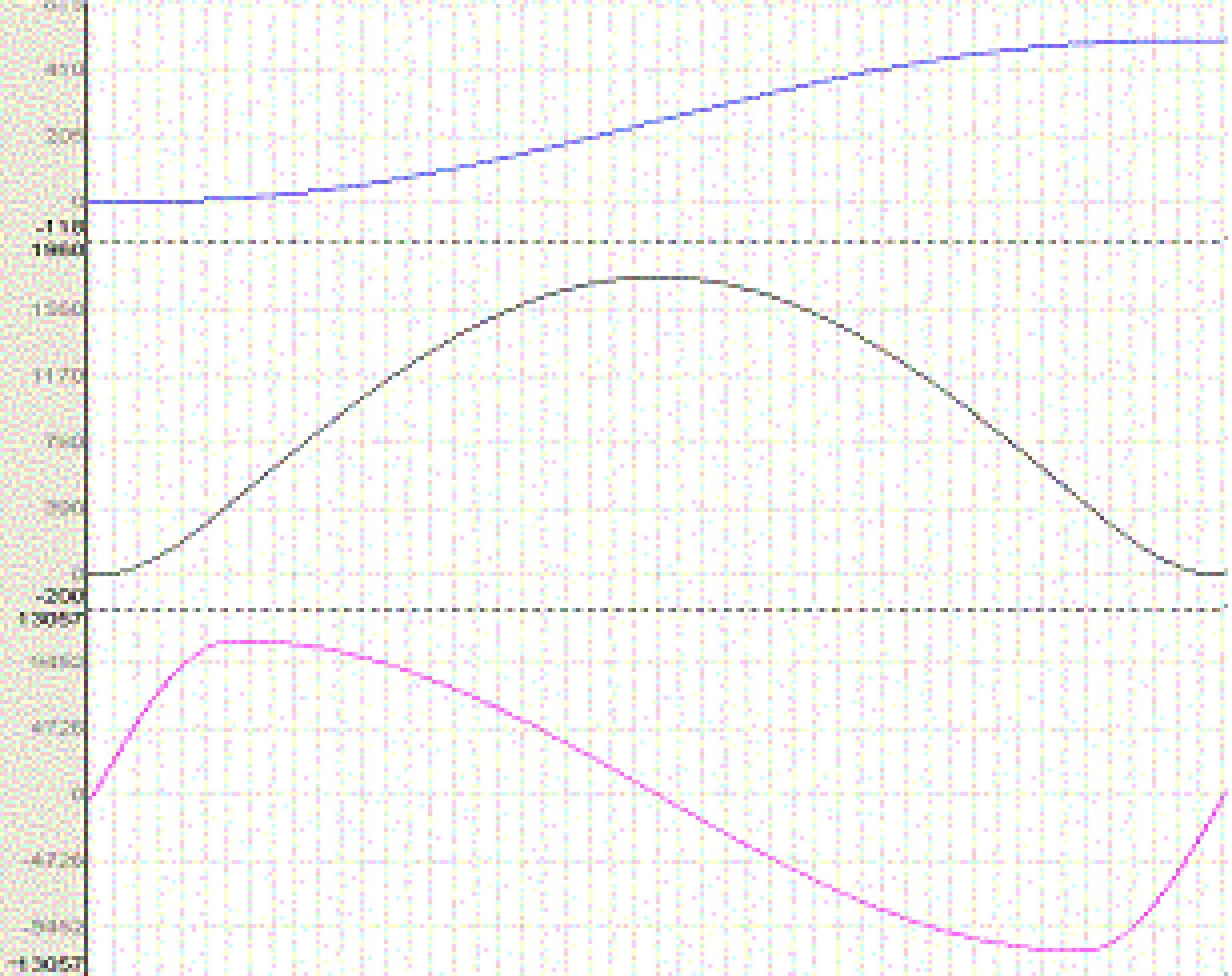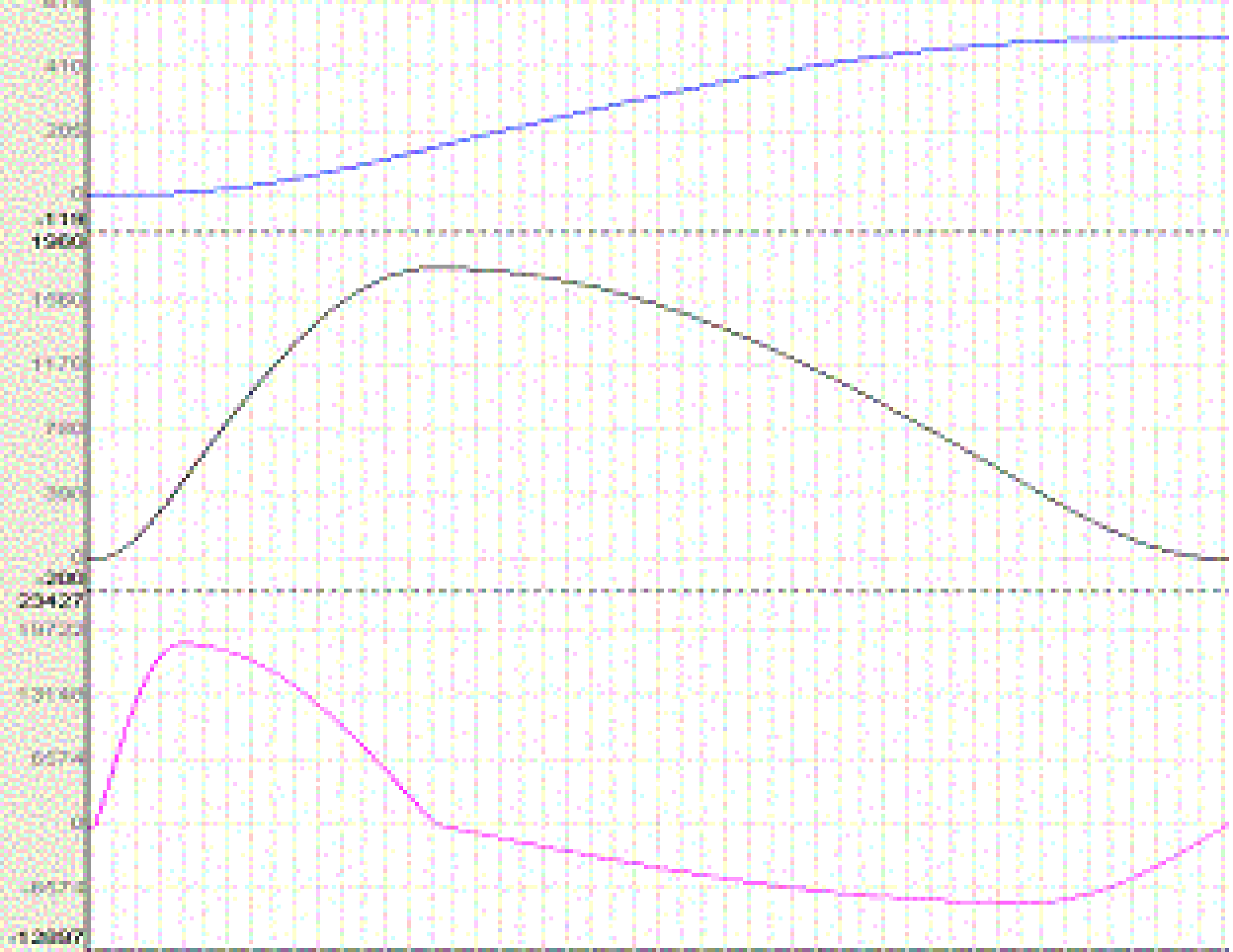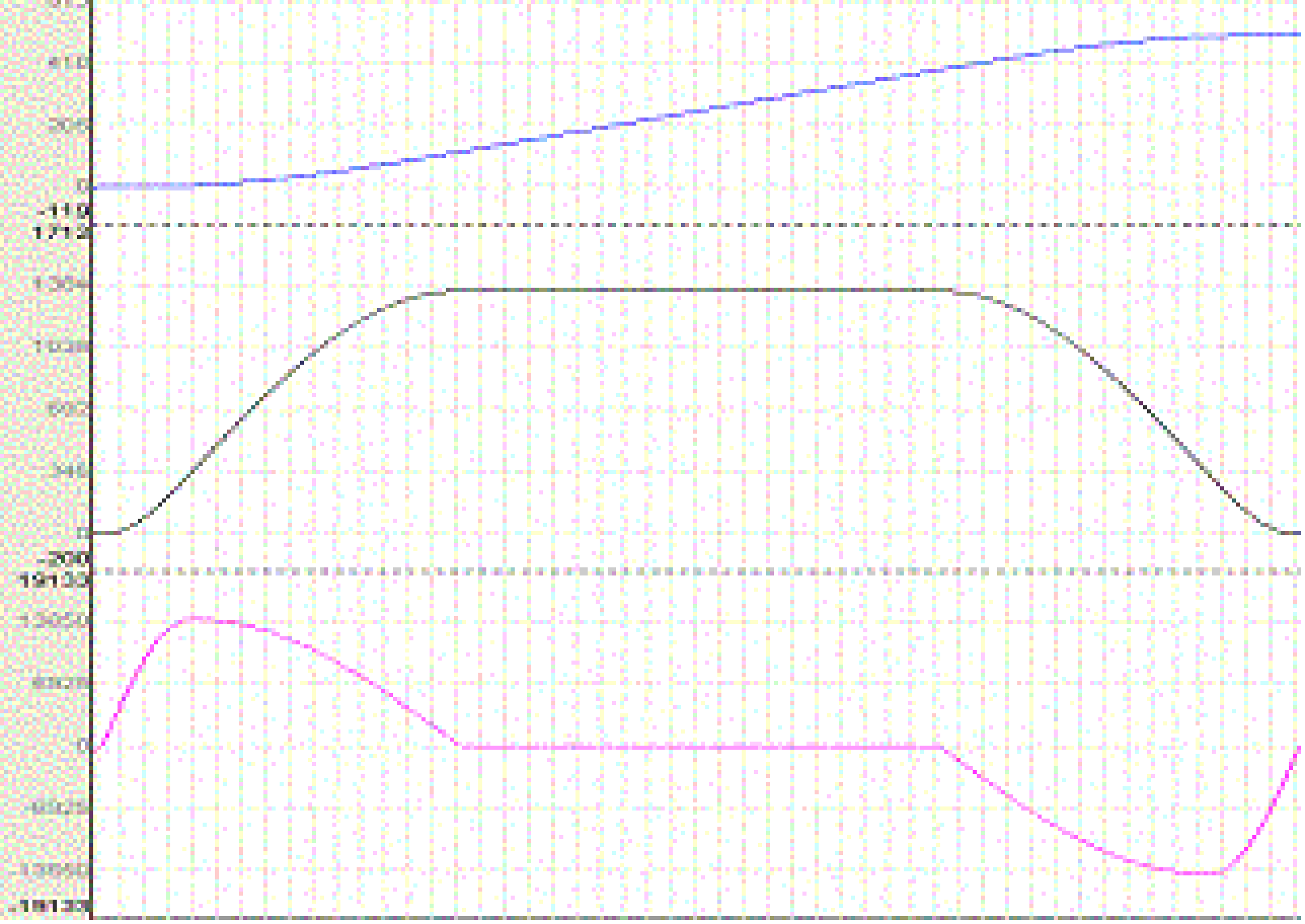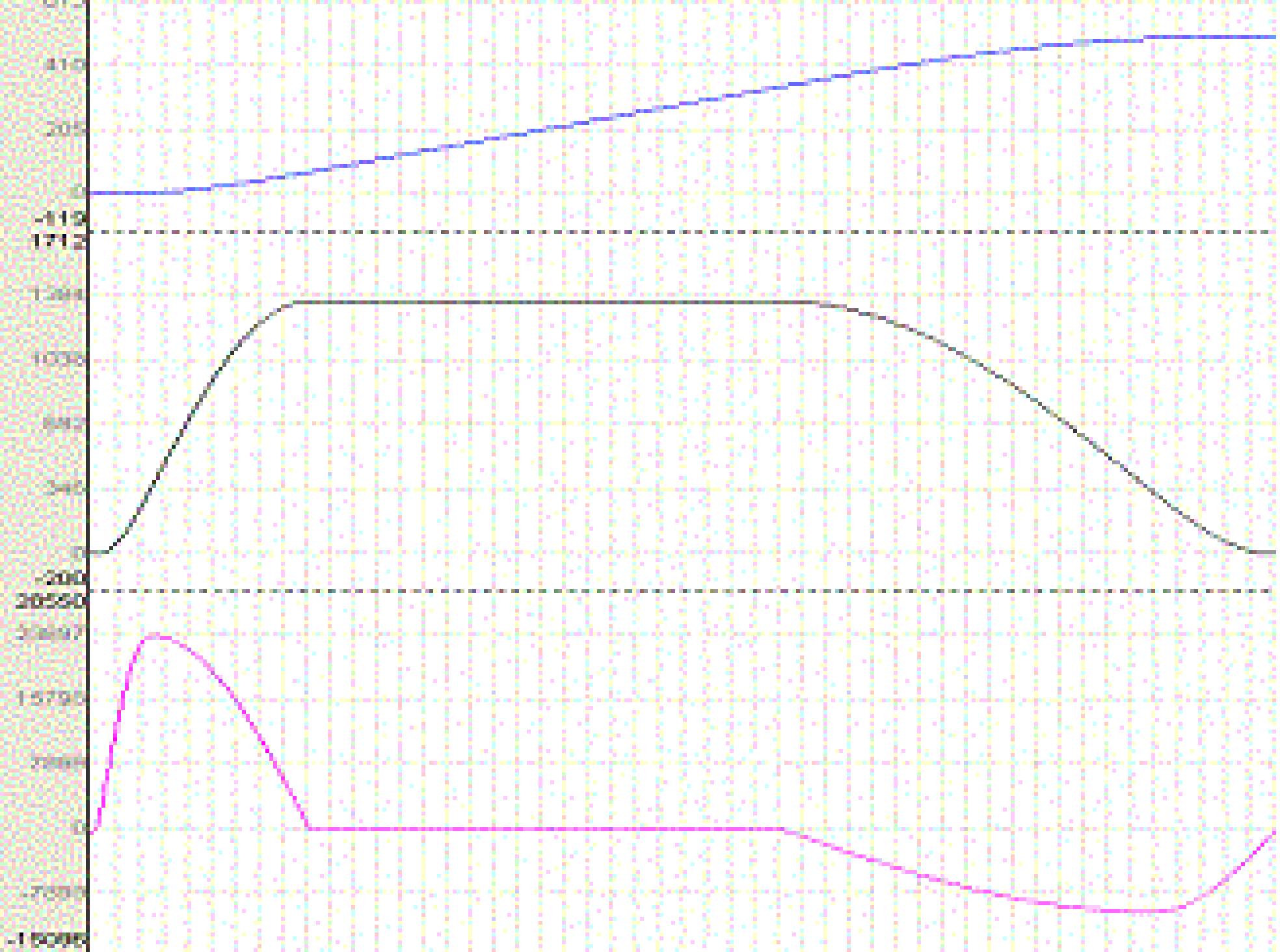FC_ProfileSetC - General Information
|
Type: |
Function |
|
Available as of: |
SystemInterface_1.32.6.0 |
|
Versions: |
Current version |
Modify the curve component C of the profile.
You can insert a linear component for certain rules of motion.
Those rules are:
oQuadratic parabola ("parable2"),
oSimple sine ("simplsin"),
oPolynomial of the fifth degree ("poly5"),
oInclined sine ("inclisin"),
oModified acceleration trapezoid ("modacctr"), and
oModified sine ("modisin").
You can define the linear component by using the FC_ProfilSetC(lrC) function to set curve component C of the resulting rule of motion. The linear component of the resulting rule is 1 – C. That means that a rule with C = 1 contains no linear component (and is therefore equal to the initial rule), a rule with C= 0.7 has a linear component of 30 %, and so on. The permissible value range for C is 0.0001 ... 1.
The function FC_ProfileSetLambda() maintains its validity. For C=1, it determines the position of the turning point, for C < 1 it determines the position of the linear component (see diagrams below).
|
Input |
Data type |
Description |
|---|---|---|
|
i_diProfileId |
DINT |
Logical address of the profile |
|
i_lrC |
LREAL |
Curve component |
|
Data type |
Description |
|---|---|
|
DINT |
0: OK -1: i_diProfileId invalid -2: C is outside the value range allowed -20: The function is not supported by the selected profile (not possible to set the curve component) -30: Profile is being used by another function and therefore is blocked. |
The following diagrams illustrate the above discussion. The position is blue, the velocity is black, and the acceleration is pink.
Original rule: centered turning point, no linear component (Lambda=0.5, C=1)

Rule with shifted turning point, no linear component (lambda=0.3, C=1)

Rule with centered turning point of 40%, (lambda=0.5, C=0.6)

Rule with shifted turning point of 40%, (lambda=0.3, C=0.6)

In the case of the profiles mentioned above, the initialization Lambda=0.5, C=1 is carried out in case of loading via FC_ProfilLoad() so that the rule is available in its standard form.